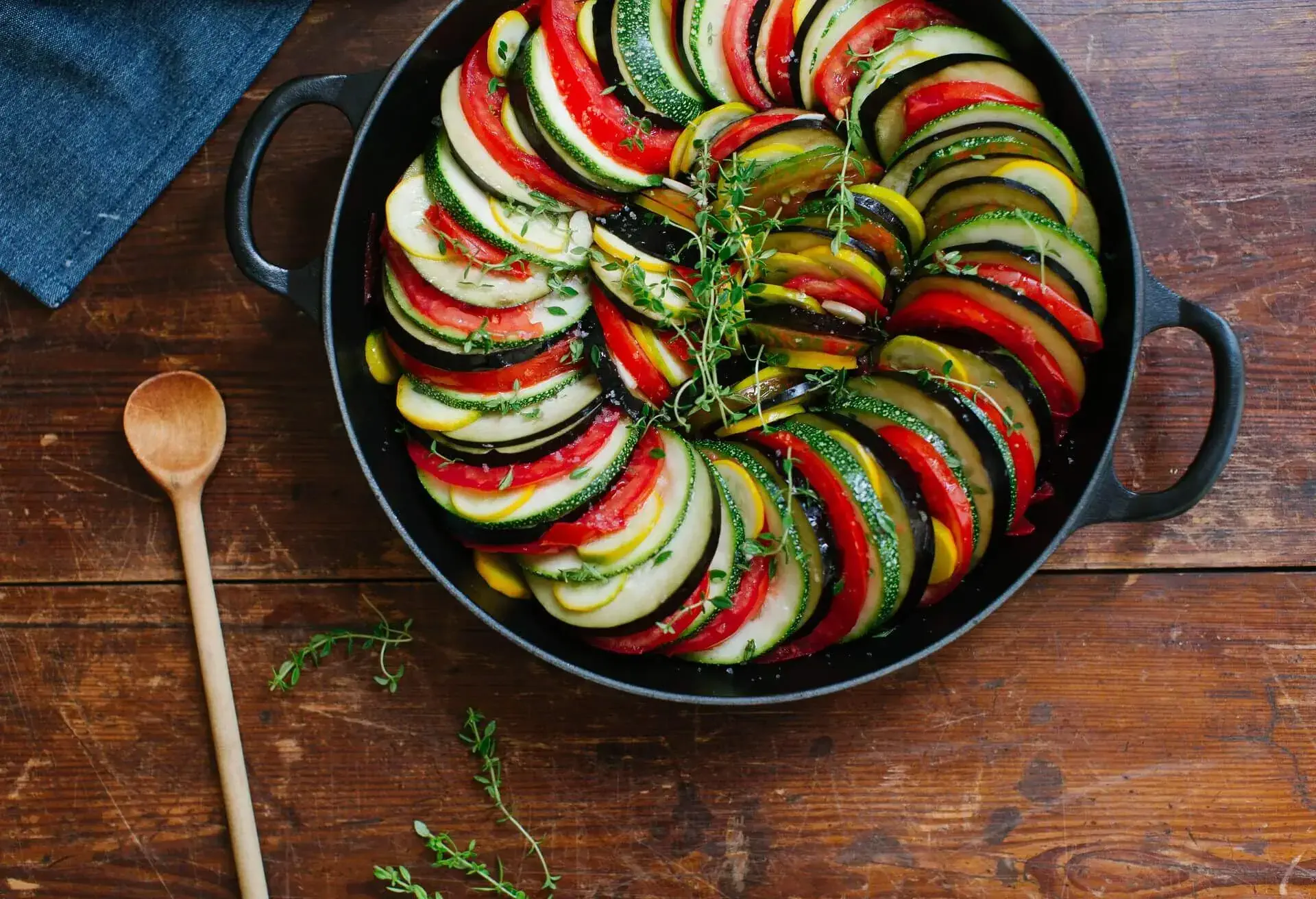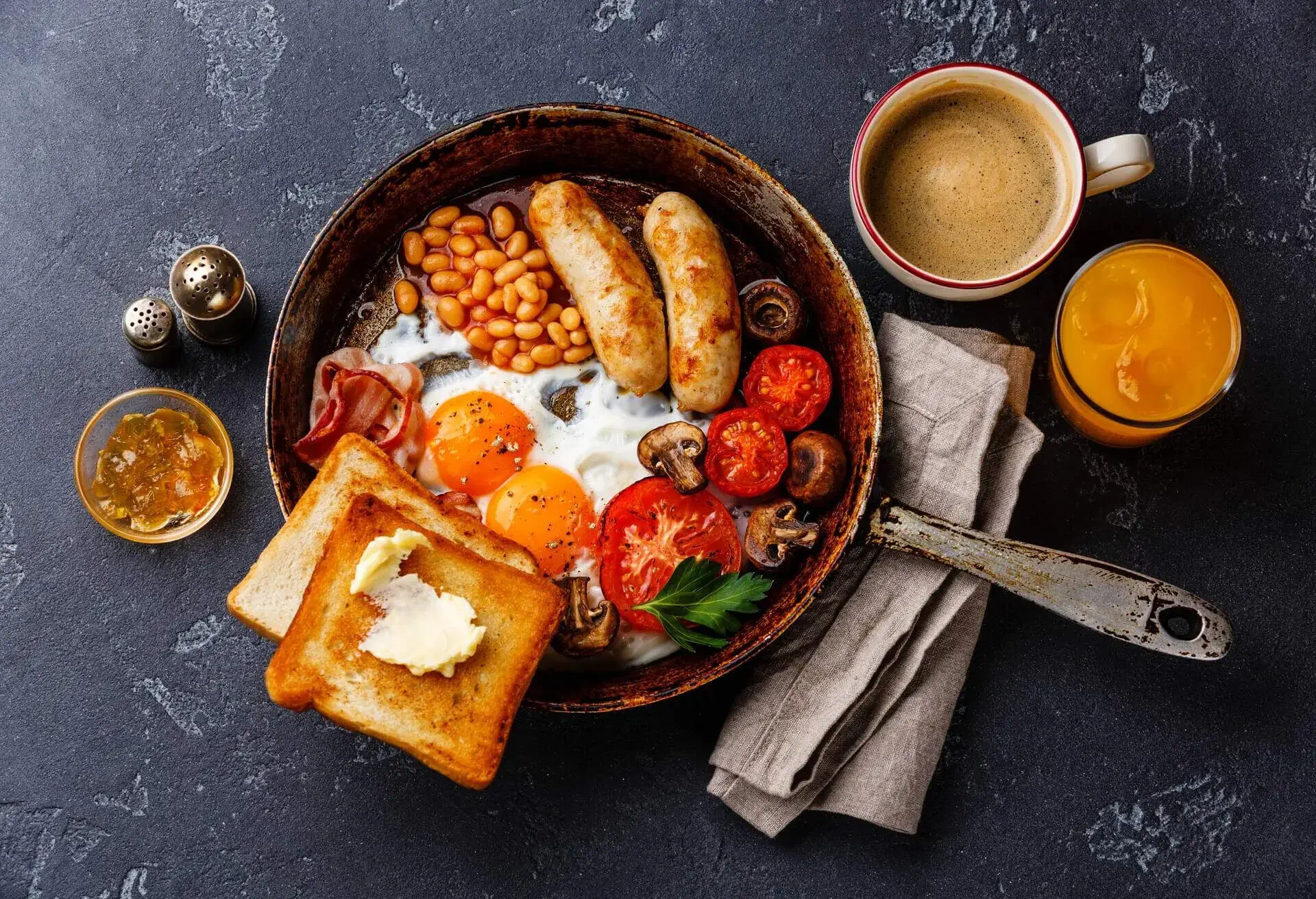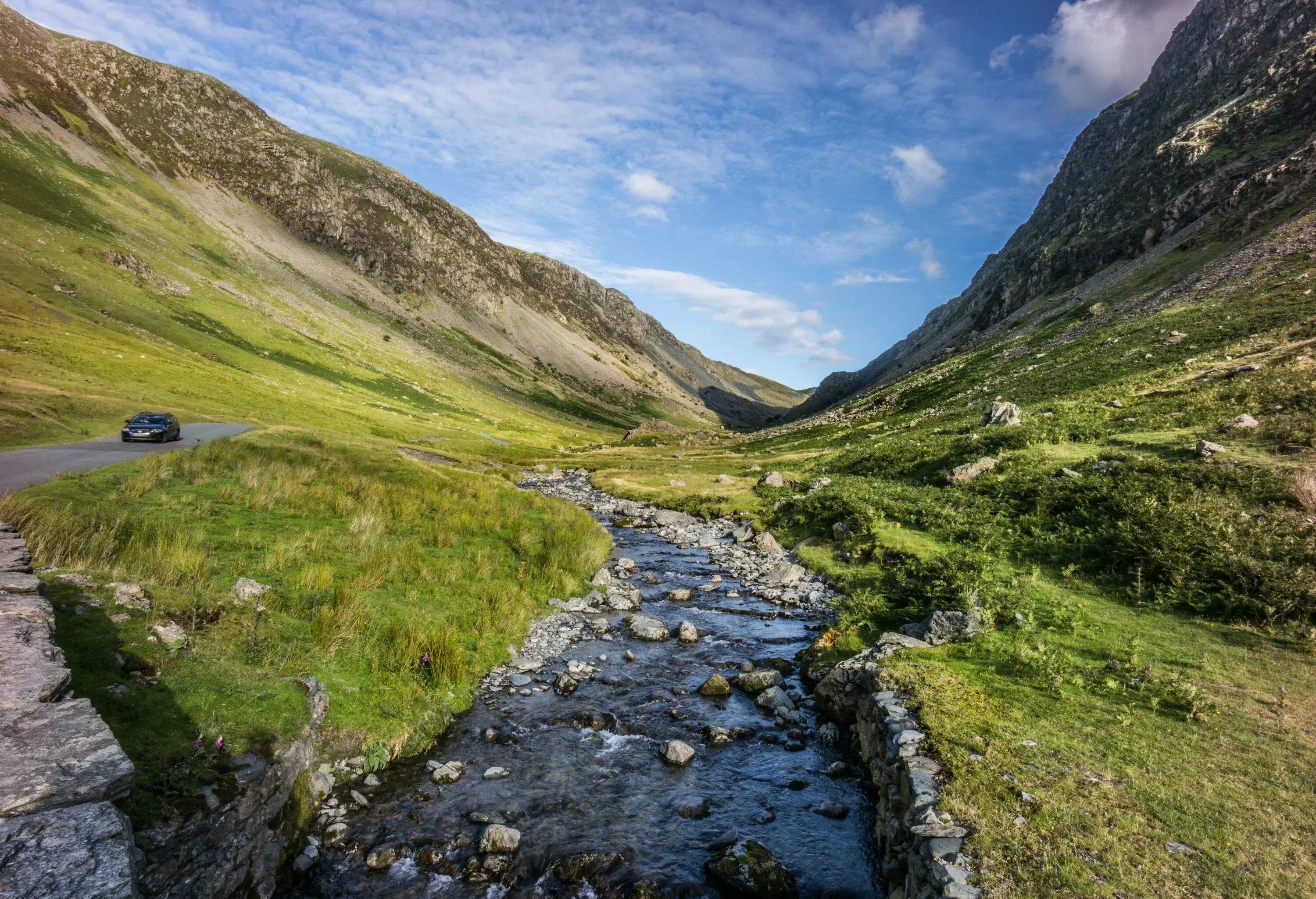Local ingredients are what make national dishes so distinctive
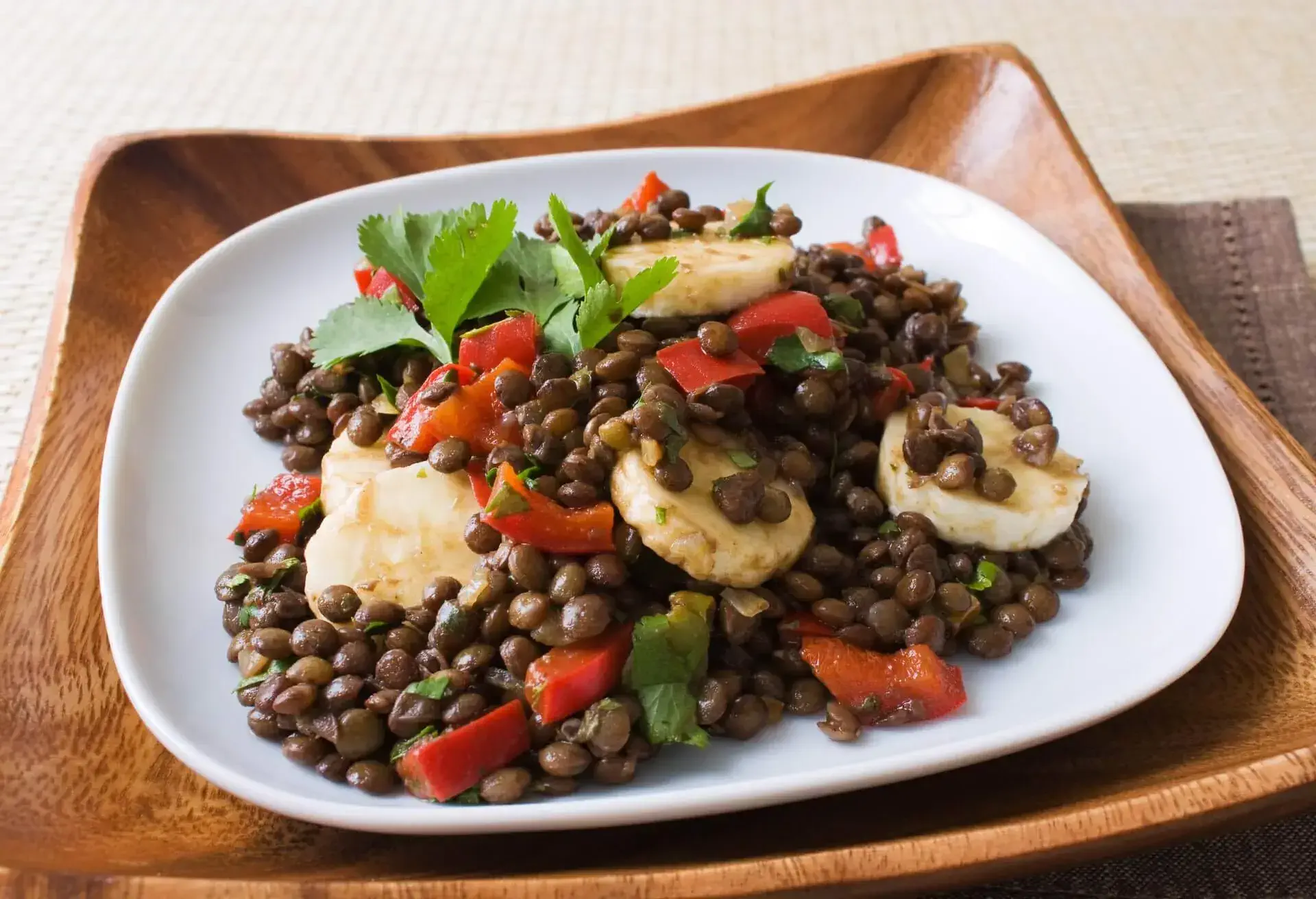
Every country has its own national dish, or possibly dishes, and exploring the local cuisine is part of the joy of travel. Some of the most extraordinary national dishes are based on just one or two locally sourced ingredients, while others are an assortment of competing flavours, reflecting historical links with lands far away. Speaking of single-ingredient national dishes, let’s start with a very simple but especially delicious national food: papas arrugadas, from the Canary Islands. Papas arrugadas are small potatoes grown in the volcanic soils of the Canary Islands and boiled in very salty water until the water evaporates. As the potatoes cool, their salt-encrusted skin is easy to remove, leaving a creamy, flavoursome mouthful of potato heaven, created from nothing more than local ‘papas’ and sea salt – zero food miles and utterly unique.
Other extraordinary national dishes from the Spanish mainland are based on rice; what makes them so extraordinary are their brilliant colours – saffron-yellow paella, dramatic scarlet rice with crimson deep-water Atlantic carabinero prawns, and mysterious inky-black ‘arroz negro’ cooked in cuttlefish ink. The only national dish to rival these Spanish rice meals in terms of brilliant jewel-like colour is the national dish of Ukraine: the sweet-salty magenta beetroot soup known as bortsch, usually served with a blob of pure-white yoghurt floating on a carmine sea.
Some national dishes are prepared in surprising ways
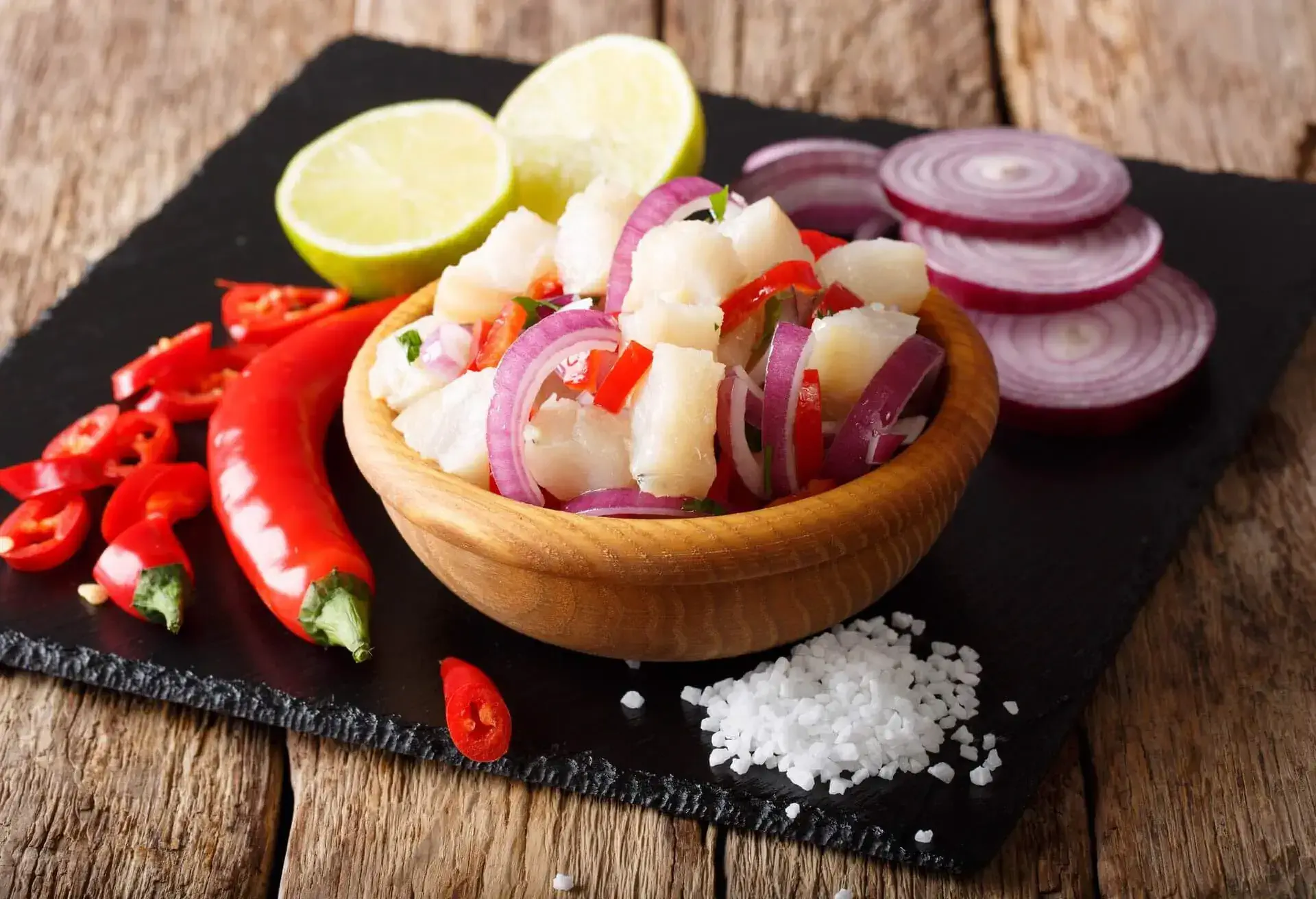
Many visitors to Peru fall in love with the country’s vibrant, spicy cuisine based on ancient grains and pulses, New-World vegetables and of course seafood; in fact, many people say that Peru has some of the best food in the world. The national dish is ‘ceviche’, based on raw fish and (unless you are a fan of Japanese sashimi) you may question the way ceviche is prepared. Classic ceviche is cubes of fresh white fish marinated in lime juice, with sliced onions (raw), fresh sliced green chiles (raw) and lots of coriander leaves. The salty citrus juice ‘cooks’ the fish – a chemical rather than a physical method of cooking.
Some countries have national dishes that stretch back for millennia
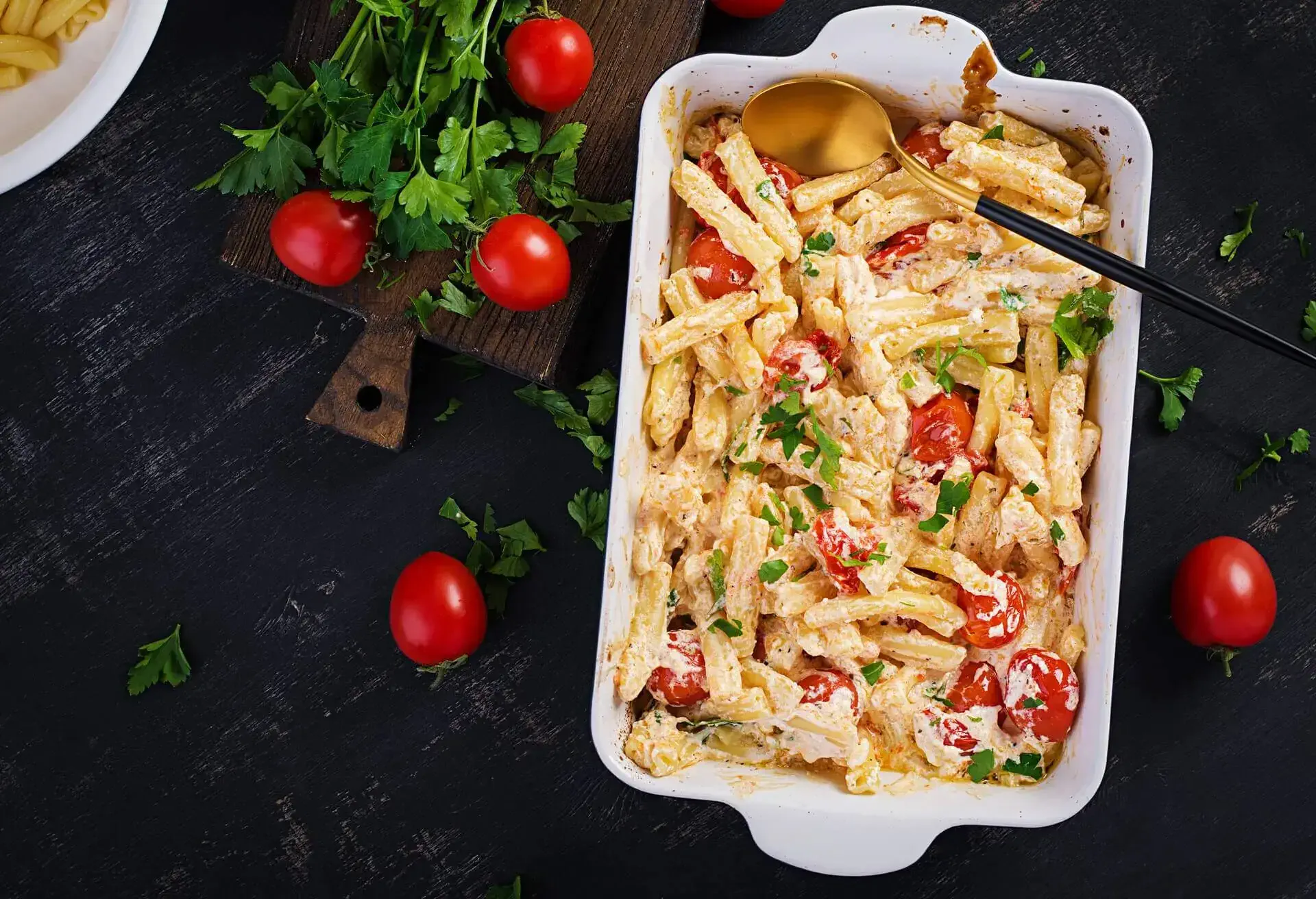
Italy’s two national dishes are based on two different staples – wheat and maize. Pasta made from dried wheat flour has existed in the Eastern Mediterranean for thousands of years; but Italy is the country that has created the wonderful array of pasta recipes we all love so much, and so Italy is a great place to sample them, in order to appreciate how each region has its own variation of pasta – the ubiquitous spaghetti bolognese, for example, does not exist in classical Italian cuisine because spaghetti is eaten in Naples, while the rich meat and tomato bolognese sauce comes from Bologna, where they eat tagliatelle. Polenta is made from maize these days, but before maize was imported from the New World, types of polenta had been made of barley, spelt or chestnut flour since Roman times. We all love pasta dishes, but don’t forget to sample the simple delights of crunchy, creamy polenta next time you visit Italy.
Different food cultures use the same local produce in different ways
Italians use semolina wheat to make pasta while their neighbours on the southern shores of the Mediterranean use the same semolina wheat to make couscous – one of the national dishes of the Maghreb countries. Couscous is steamed over a bubbling pot of lamb or beef stewed with seven different vegetables and plenty of fresh coriander and parsley. The couscous is flavoured with salt and fermented butter, the meat and veg is placed on top and then traditionally eaten with the fingers. If you have a chance to spend your holidays in Morocco, Algeria or Tunisia, try to find a restaurant serving traditional fresh, hand-rolled couscous – there is nothing quite like it.
Some extraordinary national dishes sound so delicious – why have we not heard of them?
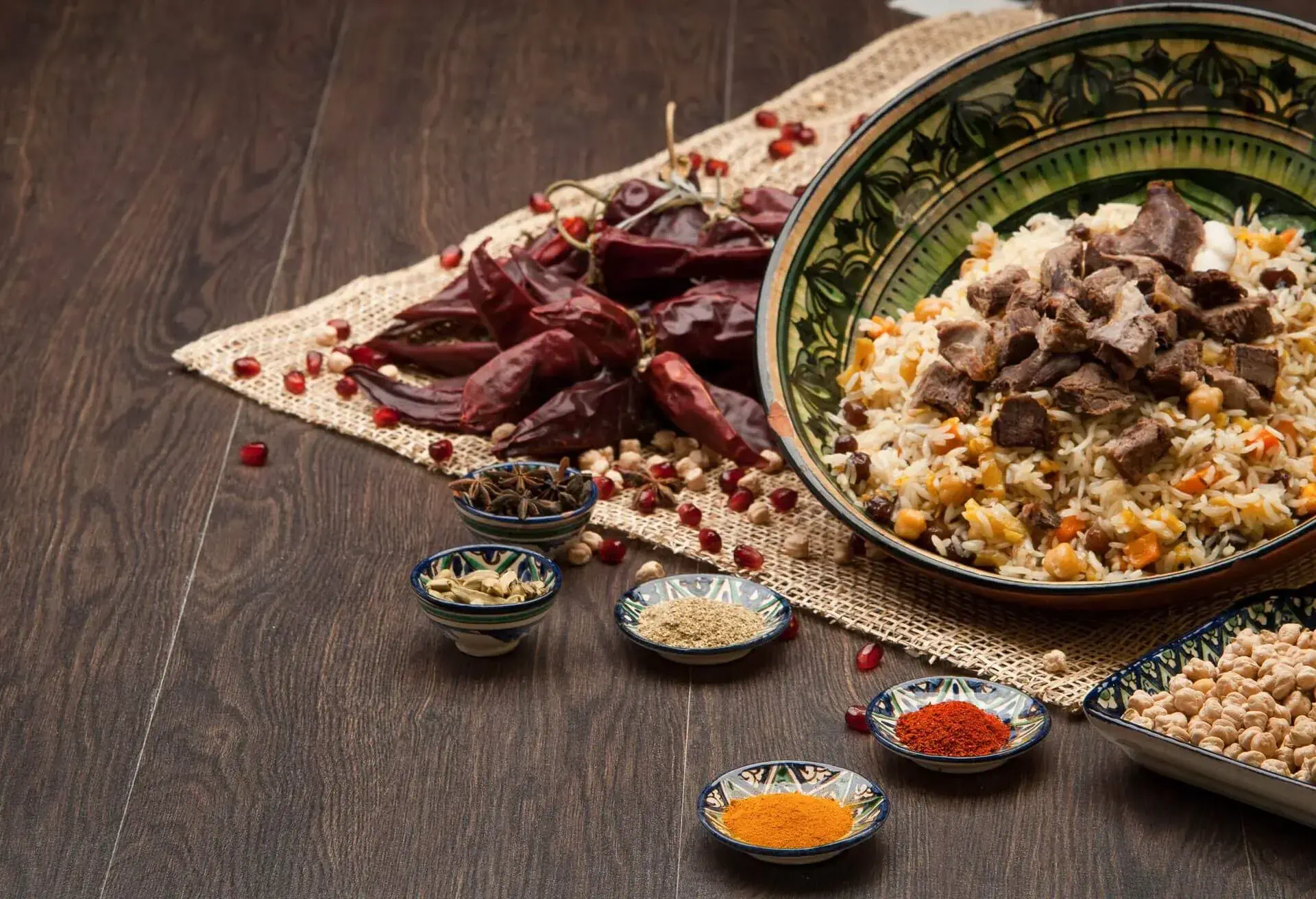
There are national dishes from around the world that we are not familiar with – and ‘plov’ is definitely one of those. It is the national dish of Azerbaijan; the name could be derived from the more familiar word ‘pilaf’, but it has an extraordinary twist – the rich, soft, garlicky, saffron-infused rice with its tiny bits of meat, onion and dried fruit is served in a crisp, crunchy crust that is cut open to reveal the steaming ‘plov’ inside.
Another extraordinary national dish that is not well known internationally is the national dish of Russia, pelmeni: delicate wheat-flour dumplings stuffed with minced meat and served with sour cream – sounds yummy. Georgia is a country that is recognised as having some of the best food in the world – key ingredients include cheese, mushrooms, walnuts and homemade bread – in fact, ‘khachapuri’, the national dish of Georgia, is based on a loaf of stone-baked bread stuffed with cheese and an egg, drizzled with salty melted butter and washed down with a glass of the most natural and unadulterated wine to be found anywhere on earth.
Some national dishes are extraordinary because they are so complicated to make
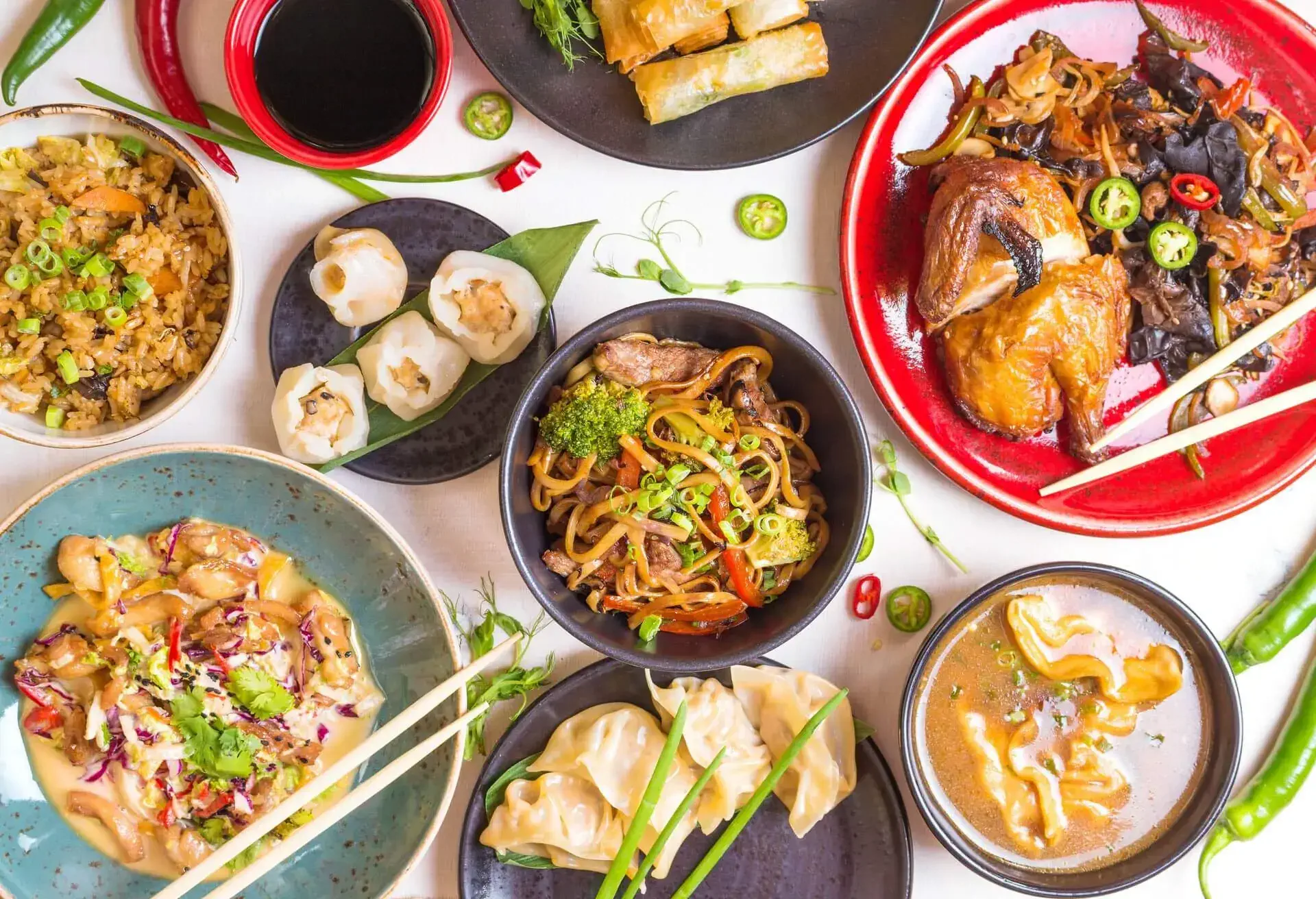
‘Complicated to make’ describes the process of creating one of China’s national dishes, Peking duck or crispy duck pancakes – the duck takes several days to prepare, and some recipes recommend drying it with a hair-dryer! Even more complicated if you start from scratch is the apparently simple Turkish ‘borek’, a sort of cream cheese and spinach pie. The filling is easy to prepare, but the phyllo pastry takes hours of careful rolling and stretching – it has to be so thin as to be translucent but must not tear. Truly a labour of love, and we recommend that you have at least one borek a day when you next visit Turkey.
There are national dishes that have gone on to become extraordinarily international

Everyone who is lucky enough to spend a holiday in Greece should make sure they try a real Greek moussaka, originally a baked dish featuring layers of aubergine, minced lamb and bechamel sauce, topped with cheese flavoured with cinnamon, nutmeg and allspice. It is one of those national dishes that is to be found in many guises on menus all over the world, a bit like ‘coq au vin’, one of the national dishes of France. However, the further a dish travels from its country of origin, the more scope there is for changes and substitutions, or even additions and ‘improvements’ to the recipe – moussaka with sausage anyone?
Next time you travel to France, make time to sample the real ‘coq au vin’ on its home turf, in order to appreciate the sublime simplicity of a dish that relies on meticulous preparation of just a few key ingredients, namely a whole marinated chicken simmered in a rich red-wine sauce with shallots, mushrooms and chopped smoky bacon; no need for extras such as carrots, potatoes and gravy browning, and no ‘time-saving’ shortcuts. Perhaps the most extraordinarily international cuisine comes from the United States – hamburgers and fries are available almost everywhere on the planet.
A trip around the many extraordinary national dishes of the world
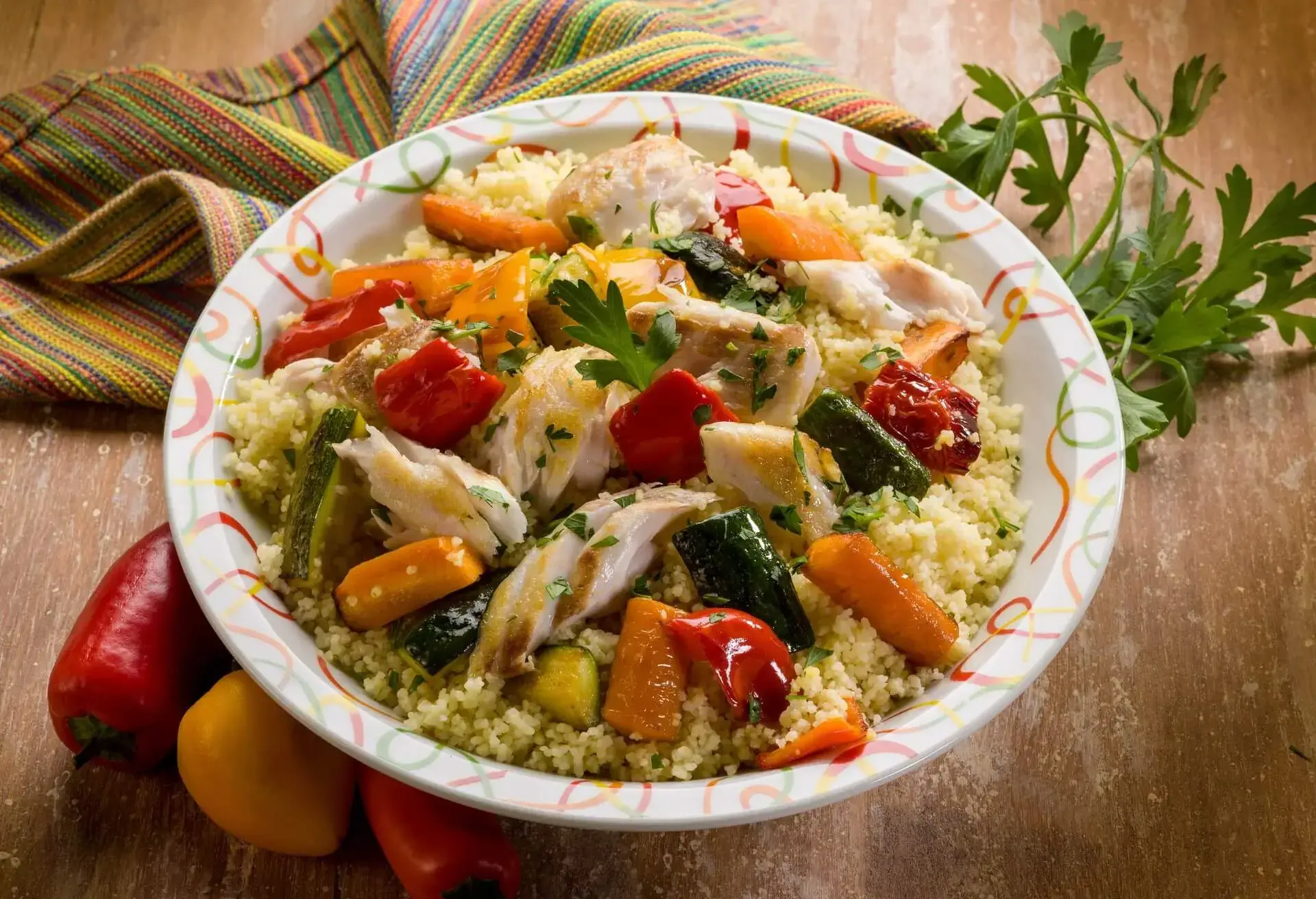
Where would you go if you decided to treat yourself to a voyage of culinary discovery? Perhaps the national dishes of the many countries of the African continent would be the most intriguing, not only because we know so little about them but also because they use grains such as sorghum, teff and millet (as well as many vegetables that are unfamiliar) to create utterly unique national dishes. On the other hand, the wonderful food cultures of France, Italy, Turkey and the Levant, for instance, are almost irresistible when it comes to experiencing world-class gastronomy. Thanks to KAYAK, the choice is yours.

